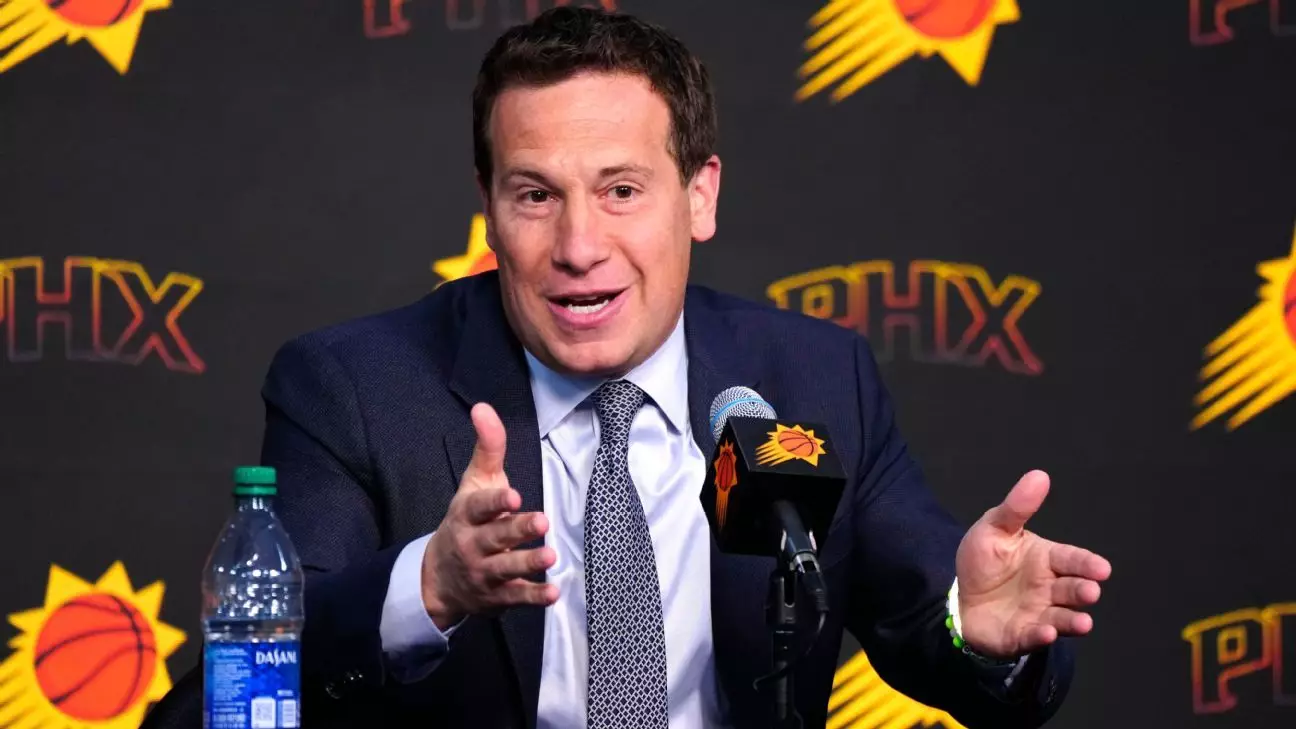The landscape of sports broadcasting is undergoing a seismic shift, driven by bold decisions and innovative thinking. The Phoenix Suns’ decision to walk away from their traditional regional sports network (RSN) in favor of a free over-the-air (OTA) broadcast model exemplifies this transformative trend. Historically, teams relied heavily on media giants to deliver games within regional territories, often at significant costs and with limited accessibility for fans. Yet, the Suns challenged the status quo, demonstrating that prioritizing the fan experience can lead to unexpected, lucrative outcomes.
This move was not merely a tactical gamble but a strategic assertion that accessibility and engagement are fundamental to building a sustainable sports franchise in the modern era. By opting for a publicly accessible broadcast partnership with Gray Media, the Suns effectively turned their local broadcasting paradigm on its head. This decision was met with skepticism from traditionalists but proved to be a masterstroke, setting a precedent that could redefine how teams approach their media rights in the future.
Economic Resilience Through Fan Engagement
A critical aspect of the Suns’ strategy was their focus on expanding the audience base. Despite initial legal disputes and resistance from established RSN providers, the Suns persisted, believing that connecting more fans to their games would ultimately translate into financial stability. Their gamble paid off: local ratings for Suns games more than doubled, and the Phoenix Mercury, their WNBA sister team, saw a staggering 425% increase in viewership.
This data underscores a vital truth—accessibility is a potent driver of fan loyalty and revenue. In an era marked by cord-cutting and declining traditional TV subscriptions, teams must innovate to sustain their revenue streams. The relative success of the Suns’ OTA deal emphasizes that broader reach does not diminish value; instead, it amplifies engagement and creates new avenues for monetization—be it through sponsorships, merchandise, or streaming.
The move also rekindles a broader conversation about the importance of centered, local media initiatives that prioritize community engagement. Fans want a direct, uncomplicated way to access the games they cherish, and when franchises respond to that demand, loyalty and revenue naturally follow.
Challenging the Status Quo and Setting a New Benchmark
The legal battle between the Suns and Diamond Sports highlights the fragility of the RSN model in today’s rapidly changing media environment. While the lawsuit was eventually settled, it symbolized a significant turning point in sports broadcasting—the acknowledgment that traditional, exclusive rights agreements may no longer be the best path forward.
By producing their own broadcasts and providing free antennas to fans, the Suns not only made a statement about ownership and control but also showcased a viable alternative for other teams to consider. Initial skepticism from industry insiders and legal challenges did not deter the Suns. Instead, their success serves as a blueprint: prioritize direct-to-fan solutions that foster loyalty and ensure revenue generation, even in a shrinking traditional TV landscape.
Furthermore, their embrace of digital streaming with Suns+ exemplifies the importance of agility and technological savvy. It represents a broader industry trend where teams seek new revenue channels outside the confines of traditional RSNs. Such approaches are crucial as the NBA and other professional leagues grapple with declining regional TV revenues amid shifting consumer habits.
Implications for the Future of NBA Media Rights
The Suns’ campaign and subsequent success unfold against a backdrop of an NBA-wide paradigm shift. With over a dozen teams approaching the expiration of their RSN deals, the league faces an urgent need to adapt. The NFL’s recent record-breaking national media rights deal signifies that the sport’s overall value remains high, but local broadcast revenues are under threat.
Teams like the New York Knicks have already experienced significant reductions in local TV income, highlighting the financial risks associated with traditional models. The NBA’s challenge—and opportunity—is to craft hybrid strategies that blend over-the-air, digital streaming, and traditional broadcasts, thereby maximizing fan access and revenue stability.
The Suns’ achievements raise an important question: Can this unconventional model become a standard? As more teams and owners recognize the benefits of accessible broadcasting and broader reach, the answer seems increasingly affirmative. The overarching lesson is clear—catering to fan convenience and expanding accessibility is not only ethically sound but also financially sustainable in the long run.
In the end, the Suns’ radical approach signals a bold, optimistic future for sports media—one where the power is increasingly in the hands of teams and fans, rather than traditional networks and corporate gatekeepers. This shift promises a game-changing era where innovation and consumer-first strategies redefine the sport’s media landscape for generations to come.

